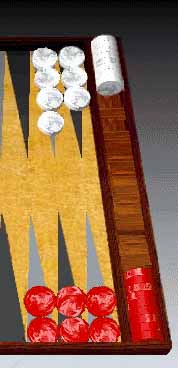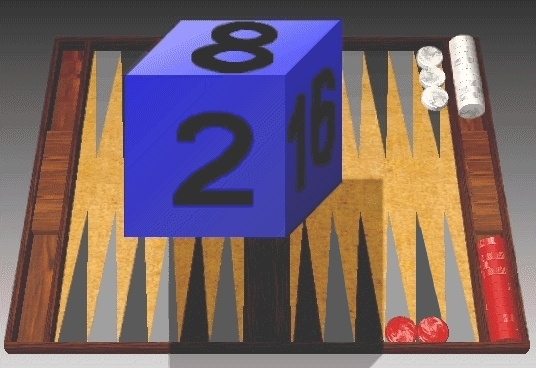|
BIFOCAL TAKE CAUSES OPTICAL ILLUSION
By Duane Jensen |
|||||||
| I led 4-1 in a nine point match which had plodded along for more than an hour. I had the red checkers and a 2-cube in this bearoff position, and redoubled to 4 expecting to cash my 2 points. How was I to know that this benign bearoff position was just a few rolls from the end of the match? - My opponent glanced at the position and scooped the 4-cube. I was so shocked that a "WOW!" popped from my mouth.
"It's a take!" he said defensively. "It's a three roll to three roll position." "But you've got 7 checkers left!" I declared. "Mmmm...you're right", he admitted. "These darn bifocals messed up my vision. I just can't get accustomed to these new glasses." This evening the backgammon gods were looking out for the visually impaired players. My opponent rolled a set of fours sandwiched between my 3-1and 2-1. The next thing I saw was a big, ugly, blue 8-cube lowered in front of me . . . |
|||||||
 |
|||||||
 |
|||||||
| It looked like an optical illusion because my opponent was actually an underdog in this position, but his double was probably correct at this match score.
Should I take the 8-cube? Should he have redoubled to 8? Was my opponent correct in taking the cube if it was a three roll vs. three roll position? Should I have redoubled to 4 in the first place? These are questions you might want to investigate . . . but not now. I have an entirely different assignment for you today. Your task is to study that picture with the big, ugly, blue 8-cube. I said the position looked like an optical illusion, but the picture really does contain an optical illusion. Your quest is to find it. Need a clue? Think of the column title of some of Danny Kleinman's columns in CHICAGO POINT. Click here for the answer. |
|||||||